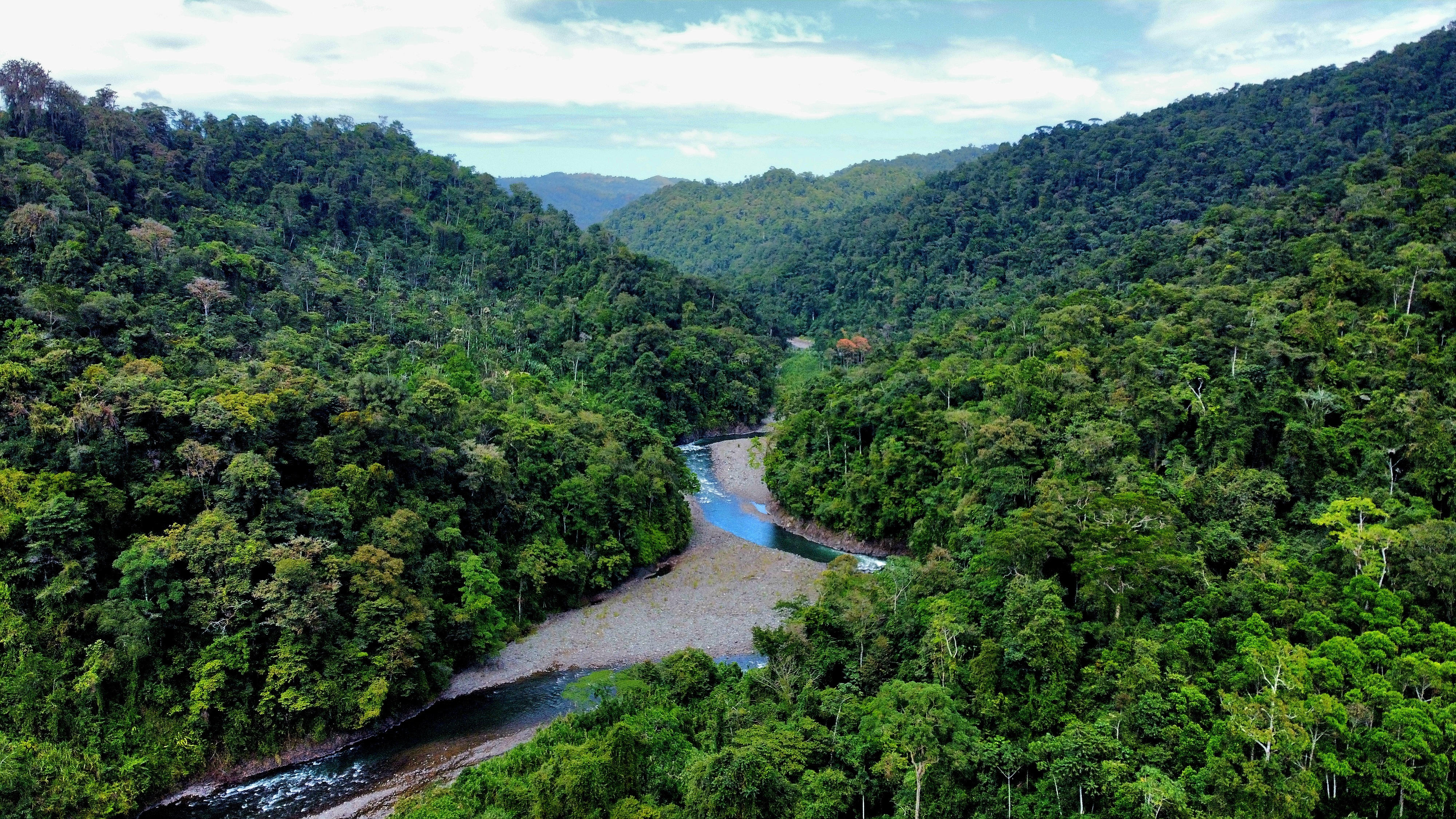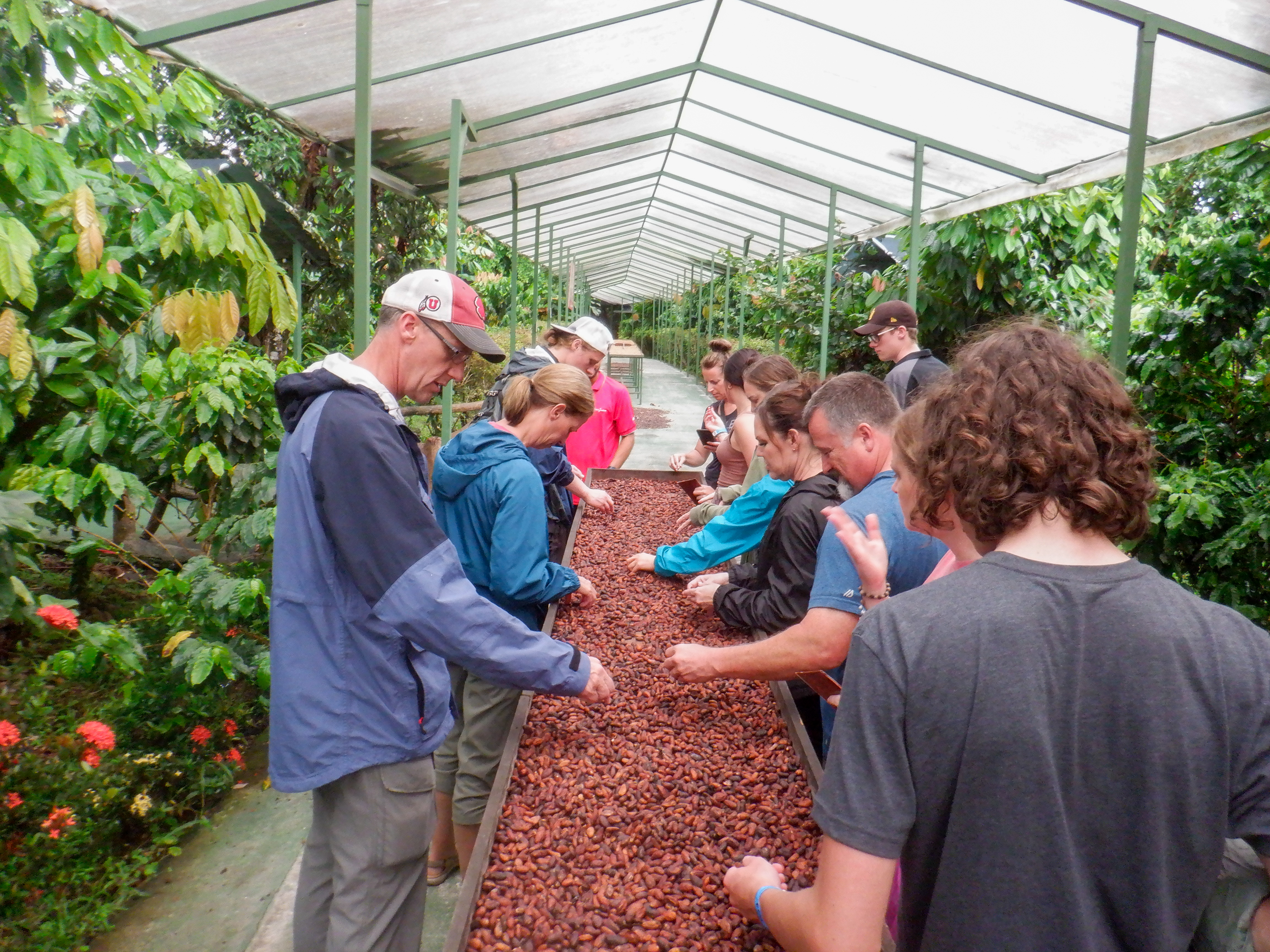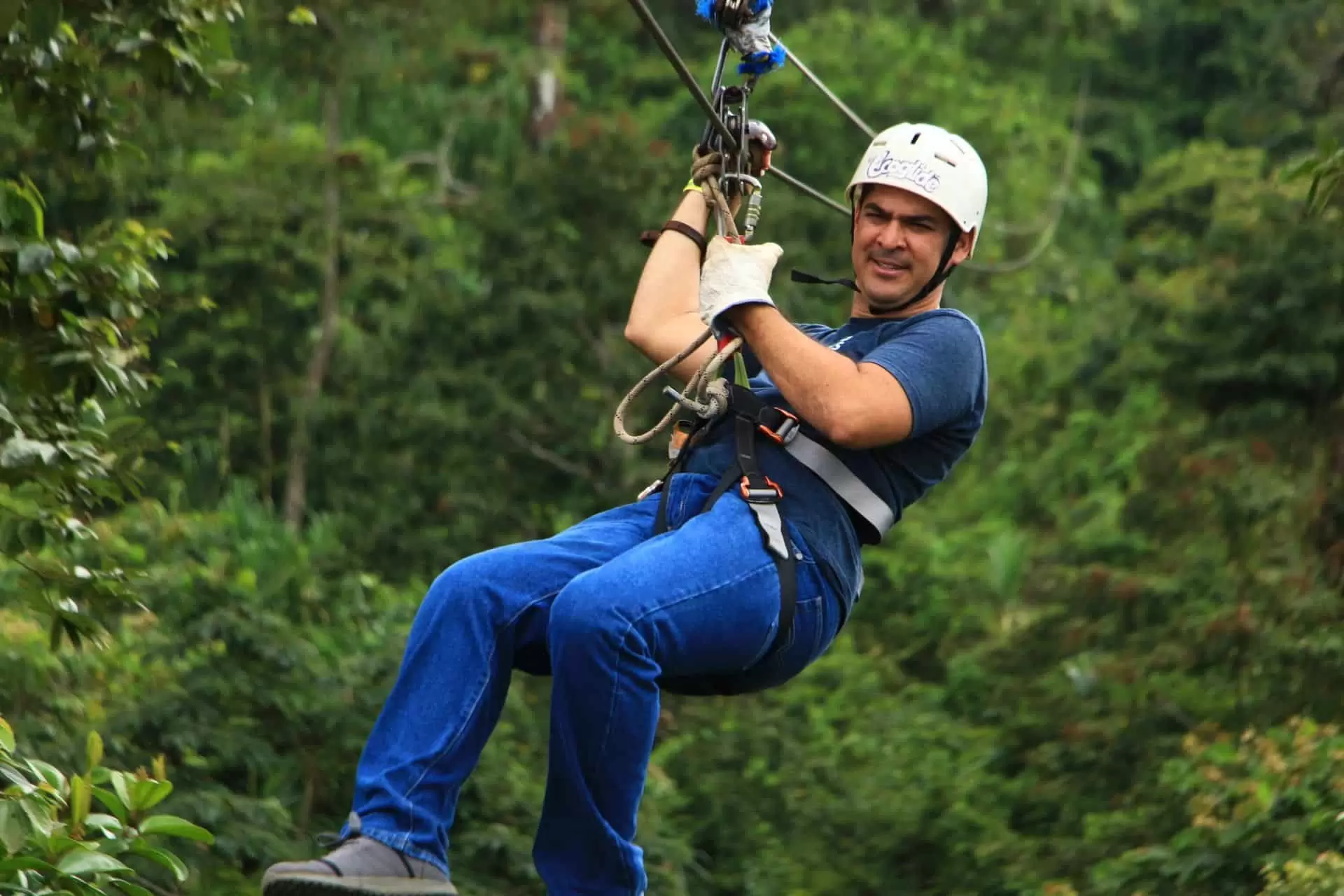What's the Buzz About Sloths?

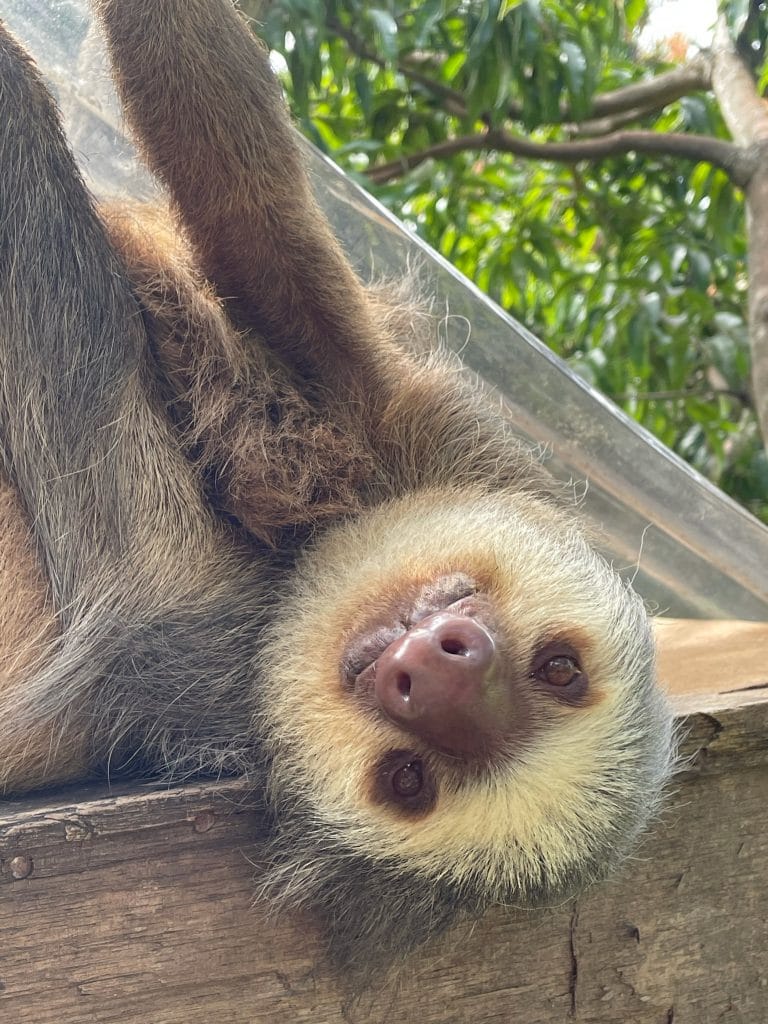

People are drawn to sloths for a variety of reasons, and their popularity has grown in recent years. One of the most frequently asked questions we get as you prepare for your trip is – will we get to see a sloth?
Let us tell you a little about these amazing creatures and why you want to see them. Then we’ll give you all our local hints and tips so you can have your best chance to see a sloth while you are in Costa Rica!
All About Sloths
Sloths are fascinating creatures with unique characteristics. Their slow-moving nature, hanging upside down from trees, and their adorable appearance make them intriguing to many people.
Sloths are renowned for their slow-motion lifestyle. In fact the word for ‘lazy’ and the word for ‘sloth’ are the same in Spanish (perezoso). They are considered one of the slowest mammals on Earth. Their leisurely movements are a result of their low metabolic rate, which helps them conserve energy. They typically move at a speed of about 0.15 miles per hour (0.24 kilometers per hour).
Sloths are known for their lengthy sleep patterns. They can sleep for 15 to 20 hours per day, conserving energy and minimizing their exposure to predators. Their slow metabolic rate contributes to their extended periods of rest.
Sloths spend much of their life in trees. Their long, curved claws allow them to hang from branches easily. They spend the majority of their lives hanging upside down, both resting and sleeping in this position.
There are two main types of sloths: three-toed and two-toed sloths. Despite their names, both types have three toes on their hind limbs, but they differ in the number of toes on their front limbs. Three-toed sloths are more active and agile climbers, while two-toed sloths are slower-moving and spend more time hanging from branches.
Their diet consists mainly of tree leaves, and they have a specialized digestive system to process this low-nutrient food. Sloths have a multi-chambered stomach and a slow digestion process that can take up to a month to complete.
The fur of sloths hosts a unique ecosystem of algae, fungi, and moths. This ecosystem thrives due to the slow movements and greenish tint of the fur, providing excellent camouflage in the trees. The algae on their fur can even provide additional nutrients and help sloths blend in with their surroundings.
Sloths face various threats, including habitat loss and fragmentation, deforestation, and human interference. Some species, such as the pygmy sloth, are critically endangered. Protecting their natural habitats and promoting conservation efforts are crucial to ensure the survival of these fascinating creatures and conservation is a huge focus in Costa Rica. As a result they often serve as ambassadors for conservation.
Why are they Popular?
Well, for starters they are adorable. Sloths have a distinct and charming appearance with their round faces, big eyes, and perpetual smile. Their slow movements and relaxed demeanor evoke a sense of cuteness that many people find irresistible.
They also embody the Costa Rican Pura Vida spirit. This spirit is a laid-back and tranquil lifestyle that resonates with many individuals. In a fast-paced world, observing sloths reminds people to slow down, appreciate the present moment, and find peace in simplicity.
Sloths exhibit unique behaviors that captivate people’s interest. From their slow-motion movements, camouflage fur, and swimming abilities to their upside-down hanging, they have distinctive habits that make them fascinating to watch and study.
They are gentle and docile – but not cuddly. They rarely display aggression and prefer to conserve their energy rather than engaging in unnecessary conflicts. This gentle disposition appeals to many people and fosters a sense of empathy and admiration. However, they don’t snuggle well.
What truly contributed to their popularity is through viral videos and internet memes. Their adorable and seemingly relatable qualities spread across social media platforms, leading to widespread fascination and a growing fan base. As a result, we are here to help make sure you get your own photo or video of these amazing animals.

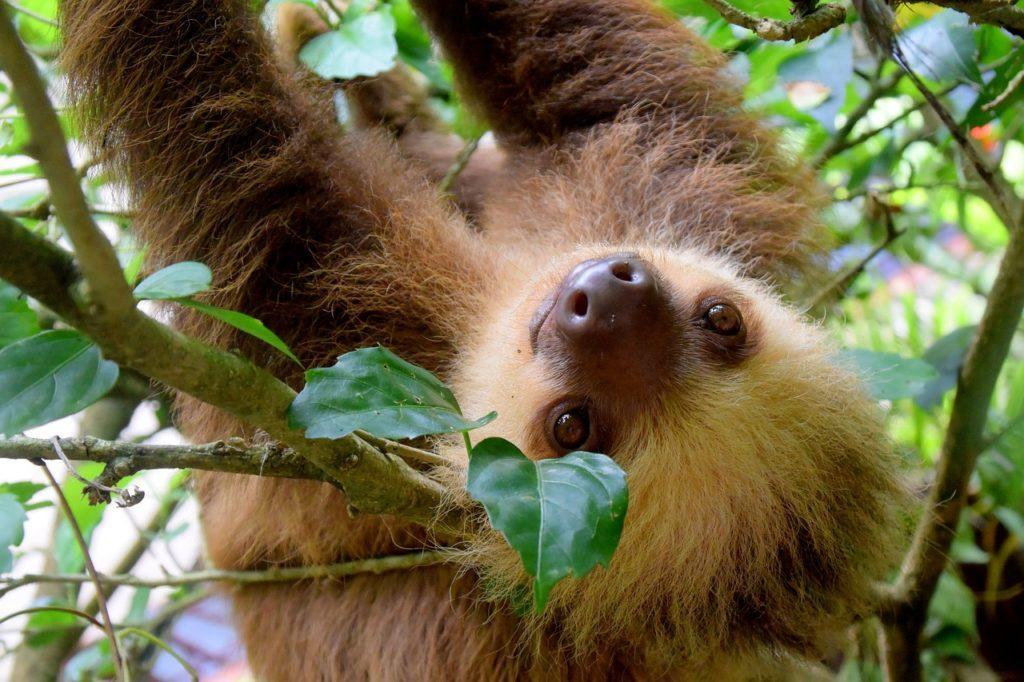
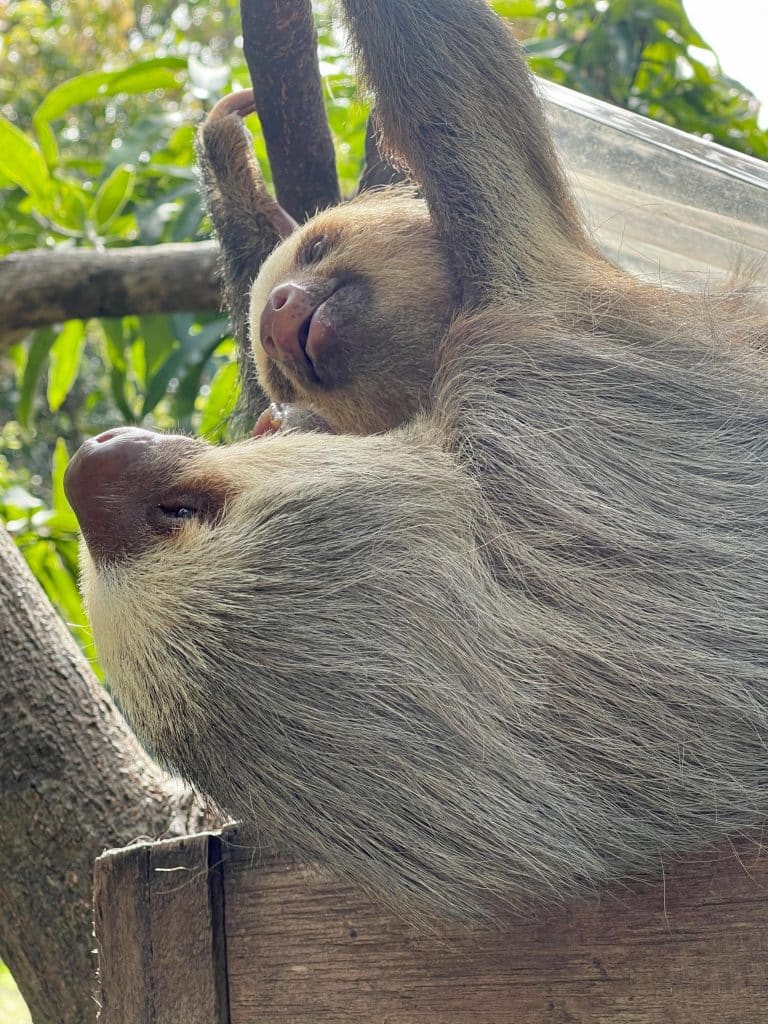
Best chance to see a Sloth
Observing them in their natural habitat allows you to witness their behavior, feeding habits, and interactions with their surroundings.
Seeing a sloth in the wild provides a valuable educational experience. You can learn about their unique adaptations, their role in the ecosystem, and the challenges they face for survival. However, as with any wild animal – seeing them in the wild is not a guarantee. So here are some things that will increase your chances:
Look for sloths in the early morning or late afternoon. These are the times that they are typically most active and when they come down from the trees to feed.
Additionally, sloths are more active during December to April, when food sources are more abundant than during May – November when it’s more rainy and they are more likely to conserve.
Head to a location known for its sloth population. Areas such as Manuel Antonio National Park, Corcovado National Park, Tortuguero National Park, and the Osa Peninsula are popular for sloth sightings.
Tell our guides you want to see a sloth. They have valuable insights into the whereabouts of sloths where you are traveling. They can also provide you with tips on where to find them and might know specific trees or areas where sloths are frequently spotted.
Be patient and constantly looking. Sloths are well-camouflaged and move slowly, so spotting them can require patience and keen observation. Look for movement or unusual shapes among the trees, and pay attention to the sound of branches rustling. Keep your eyes peeled for their distinctive fur, which can blend in with the surroundings. Take your time to scan the trees carefully.
Keep quiet as you look. Sloths are sensitive to noise and disturbance, so it’s crucial to maintain a respectful distance and avoid making loud noises or sudden movements. This will help minimize stress on the sloths and increase your chances of observing their natural behavior and help them be more active then if you are noisily searching.
Remember to maintain a respectful distance and observe sloths without disturbing or causing harm to them. Costa Rica takes pride in its commitment to wildlife conservation, so it’s essential to follow guidelines and regulations when interacting with these beautiful creatures.
Sloth in Costa Rica Sighting Guarantee
Wildlife sightings are never guaranteed, as animals in their natural habitat may choose to remain hidden or move to different locations. Using the above steps and being patient, you increase your chances of spotting sloths in Costa Rica – but it’s not a guarantee.
If you want a guarantee – we’ve got one for you: visit a sloth sanctuary or rescue center. These facilities provide a safe haven for injured, orphaned, or confiscated sloths. The advantages are you are guaranteed to see a sloth. You will also see them more up close and personal than in the wild, you will have a guided tour, and you’ll also get to learn about their care and conservation efforts.
However, they will be in a rescue or caged situation. While seeing them in the wild is exciting, and we recommend you try every trip, if your trip will not be complete without seeing a sloth, add a rescue center or sanctuary to your itinerary. There are multiple centers in various locations throughout Costa Rica so one is likely to fit inside your travel plans.
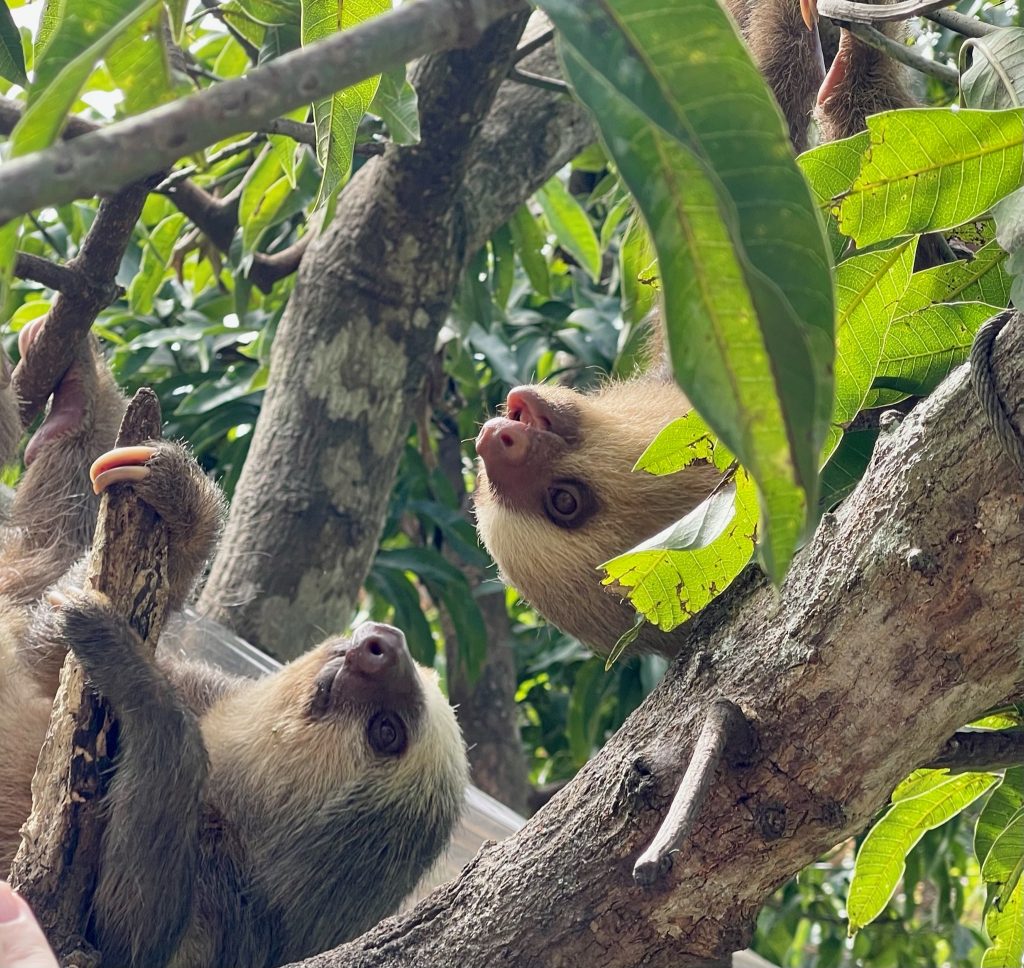
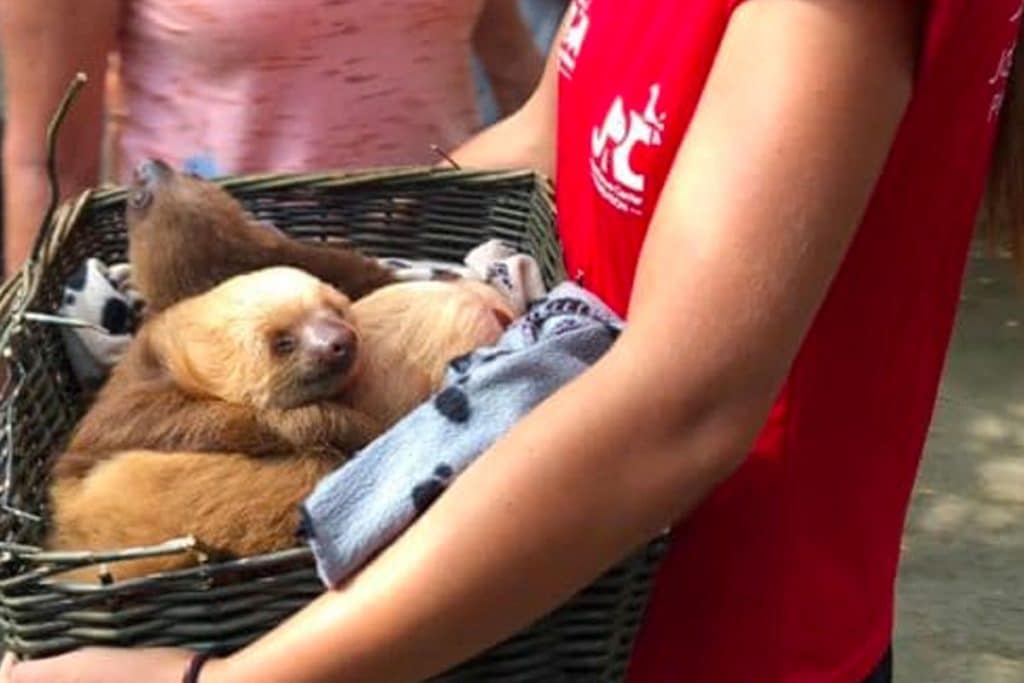

Many people find the sight of sloths to be incredibly calming and enjoyable and we think you will too! Sloths have a peaceful and unhurried way of life, and observing them can evoke a sense of tranquility and relaxation. It can be a meditative experience, allowing you to disconnect from the stresses of daily life and immerse yourself in the beauty of nature. We hope this helps you to enjoy sloths on your next visit to Costa Rica!



